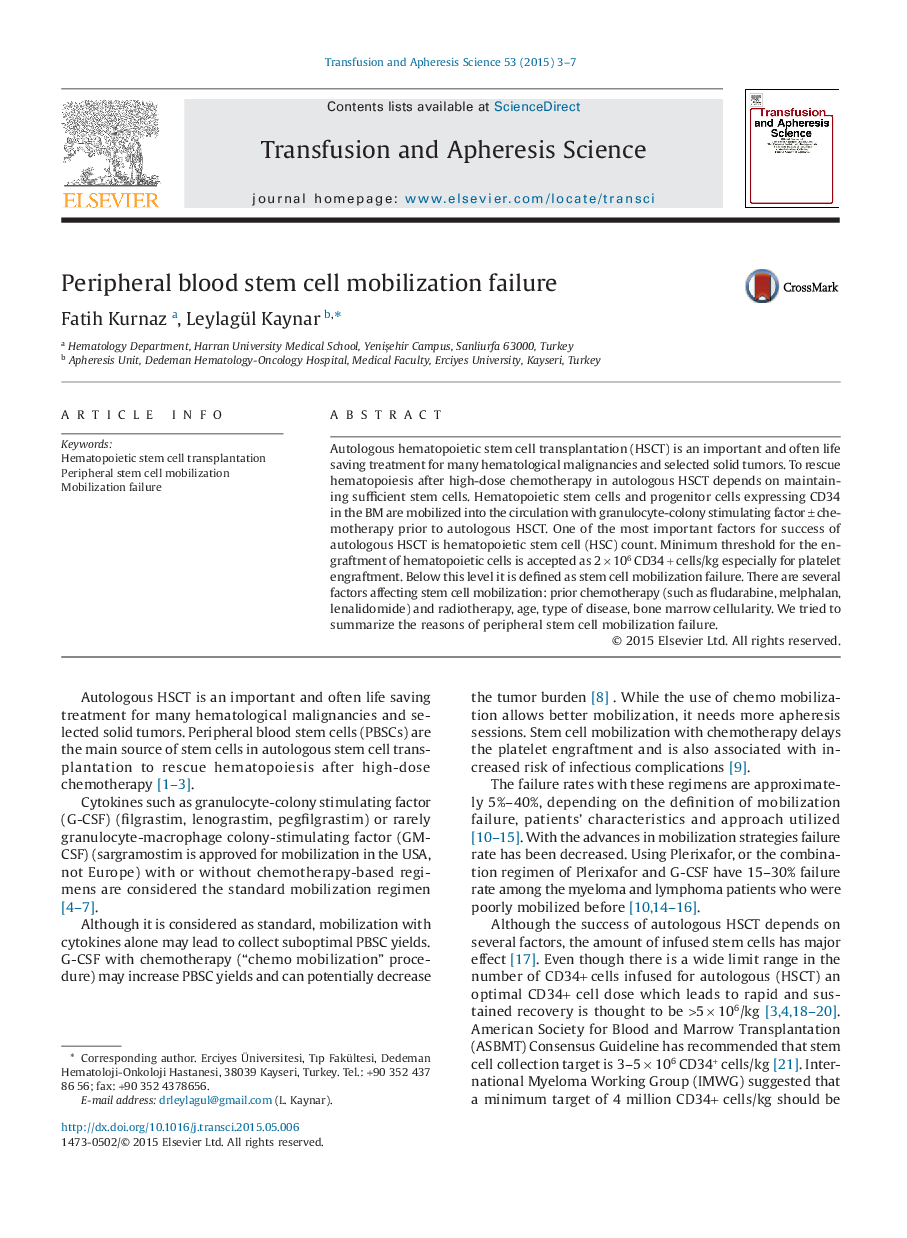| Article ID | Journal | Published Year | Pages | File Type |
|---|---|---|---|---|
| 3334940 | Transfusion and Apheresis Science | 2015 | 5 Pages |
Autologous hematopoietic stem cell transplantation (HSCT) is an important and often life saving treatment for many hematological malignancies and selected solid tumors. To rescue hematopoiesis after high-dose chemotherapy in autologous HSCT depends on maintaining sufficient stem cells. Hematopoietic stem cells and progenitor cells expressing CD34 in the BM are mobilized into the circulation with granulocyte-colony stimulating factor ± chemotherapy prior to autologous HSCT. One of the most important factors for success of autologous HSCT is hematopoietic stem cell (HSC) count. Minimum threshold for the engraftment of hematopoietic cells is accepted as 2 × 106 CD34 + cells/kg especially for platelet engraftment. Below this level it is defined as stem cell mobilization failure. There are several factors affecting stem cell mobilization: prior chemotherapy (such as fludarabine, melphalan, lenalidomide) and radiotherapy, age, type of disease, bone marrow cellularity. We tried to summarize the reasons of peripheral stem cell mobilization failure.
